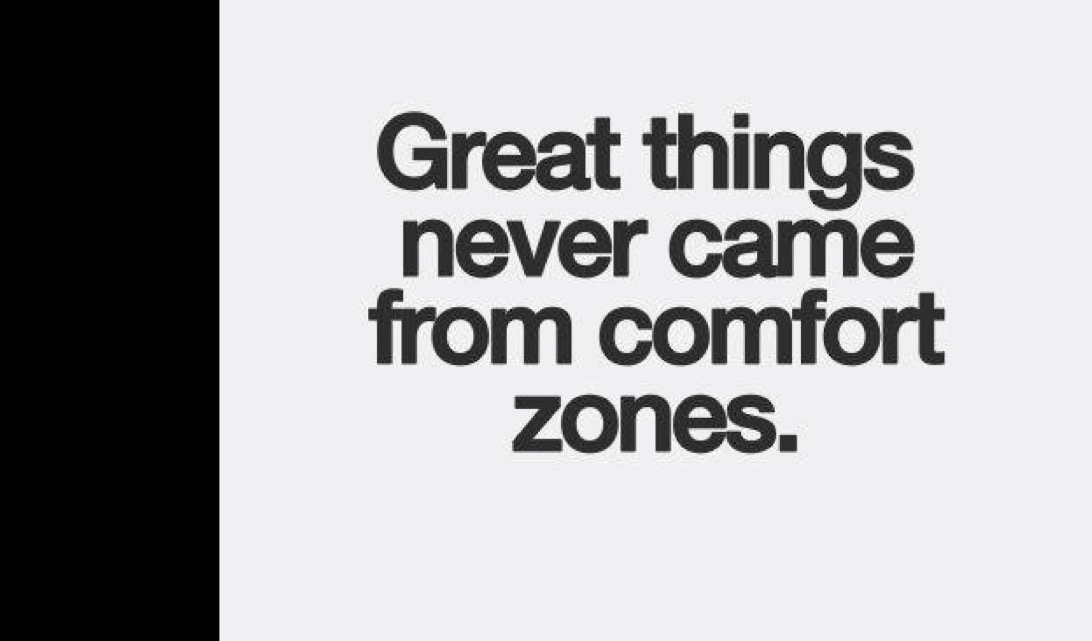
Mar 21, 2021 | Action, Courage, Intention, Leadership, Vulnerability

“Embracing the suck” is part of the path to mastering anything new says social scientist, Brene Brown.
These days, my “new” is learning to write the stories of the amazing, courageous women I’ve interviewed for my book…I’m learning to be a storyteller, essentially. And it’s hard!
It’s hard because
- I feel responsible for someone’s story. I want to write it in such a way that I honor and convey the core essence of their narrative. I want my reader to really see the women and their experience.
- I’m so accustomed to business writing, which is all about keeping the message short, direct, and to the point. Storytelling requires me to develop a style of expounding, elaborating, and being more colorful and emotive in my writing.
- I’m working to find the balance of staying focused and on point, yet sharing enough that my reader is drawn in, as if riding a wave beside my “character,” following the rise and fall of the story’s build, the peak, and the close.
The work is stretching and challenging me in new ways. The difficulty persists, but so do I. I show up even when I don’t feel creative. I make myself write – “just get words on the paper,” I tell myself, “and the flow will come.” I feel myself growing, not only in my ability to write the stories, but also in how I tell stories to others. I’m learning about the art and delivery.
This path, and sometimes anguish, of learning something new is what I refer to as The Learning Curve. I have the (ahem) joy of being in it right now!
The Learning Curve
Whenever we come up on a learning opportunity, we have a choice of two ways to go:
- We can decide to go for it, or
- We can choose to stay right where we are…“the comfort zone”

If we choose to go for it, we’re sure to have some new muscle building with a likely series of trying the new thing and failing. It’s like learning to ride a bike as a kid and taking the training wheels off for the first time. We’re gonna fall – probably over and over and over again. Attempting and failing is hard, it’s embarrassing, it…sucks. It makes us want to quit!
If we decide instead to stay the course of where we are, it’s easy. We’re comfortable. It feels good. In other words, we can “do it in our sleep.” But we also miss out on learning new things, opening up possibility, and even discovering something we might love or be really good at, that we had no idea of before.
Anytime I come up on something new – it could be a job opportunity, realizing I need to develop a skill, or fixing something in my house – I think about The Learning Curve and weigh my options: Do I really want to do this? Is it worth it? What’s the worst-case scenario?
Sometimes I decide not to take on the challenge, and I pass on the potential promotion, delegate the task, or call that plumber. That can feel really good – and necessary. But sometimes I decide to step up, stretch myself, and I go for it, I take the leap, I DIY it. And there’s a thrill in that too. Even though it brings pain with it, which it is certain to do!
What new thing are you learning these days? How’s it going?
 Hi, I’m Jeanie Duncan. I work with individuals and organizations as a transformation partner to help them unlock their Truth, discover authentic value, and create meaningful impact in the world. I believe when we are truly aligned with our purpose, we can live and perform at our highest potential. With over 25 years of experience as an executive, CEO, consultant, coach, and writer, I offer strategic, knowledgeable, and experienced guidance for those who are ready to take the courageous leap toward true transformation.
Hi, I’m Jeanie Duncan. I work with individuals and organizations as a transformation partner to help them unlock their Truth, discover authentic value, and create meaningful impact in the world. I believe when we are truly aligned with our purpose, we can live and perform at our highest potential. With over 25 years of experience as an executive, CEO, consultant, coach, and writer, I offer strategic, knowledgeable, and experienced guidance for those who are ready to take the courageous leap toward true transformation.

Apr 14, 2013 | Transition & Change

“There is nothing permanent except change.” – Heraclitus
Change and transition are at the core of my consulting and coaching work with organizations and individuals. I find myself attracted to this constant movement of life. Even when things appear to be steady, they’re continually evolving and becoming. Rather than resist, why not grab hold of that energy and proactively shape what’s becoming? Easier said than done, right?
What I have found is that change – the specific event itself – is not the greatest challenge, although at first it may appear to be. The toughest part is dealing with what comes as a result of that event, the dynamic and complex human elements of transition. It’s not easy letting go of what we’re comfortable with and leaping into the unknown. It can be a place of great uncertainty and trepidation. Makes you want to jump right in, doesn’t it?
Whether you’re the type that repels change or embraces it, below are a few ideas for how to make it a bit more manageable.
1. Make small steps or break up large-scale changes into more manageable increments.
2. Mentally link changes to established daily rituals. This can make changes like beginning a new habit, starting a new job, or adapting to a new home happen with greater ease.
3. Stay flexible, adaptable and ‘go with the flow.’ It can help you accept change instead of resisting it.
4. Look for the good that change brings. An illness, a broken relationship, or the loss of a promotion or job can seem like the end of the world, yet often they’re also gifts in disguise.
5. Reflect on your greatest learnings through the process and apply to future situations.
6. Be prepared for the unexpected during change and transition. While it’s impossible to know everything that will happen in advance, anticipating certain elements will help make the situation less overwhelming.
7. Remember that you’re not alone. Writing or talking about your circumstance with a colleague or friend can give you a sense of relief while helping you navigate through a challenging period.
8. Give yourself time to accept changes that you face, recognizing that you may need time to adjust to your new situation.
9. No matter how large or difficult a change is, you will eventually adapt to your new circumstances. The new that it brings will eventually weave itself into the right places in your life.
10. If you’re trying to change a pattern of behavior or navigate your way through a significant change, don’t assume that it has to be easy. Expressing your feelings and emotions during a period of change is natural. Then again, don’t assume that making a change needs to be hard. Sometimes, changes are meant to be that easy.
“We cannot change anything until we accept it. Condemnation does not liberate, it oppresses.” – Carl Jung
_________
Jeanie is President of Raven Consulting Group, a business she founded that focuses on organizational change and leadership development in the nonprofit sector. She is a senior consultant for TransitionGuides, a national firm working with nonprofit clients to lead efforts in sustainability and succession planning, executive transition and search. Additionally, Jeanie serves as adjunct faculty for the Center for Creative Leadership, a top-ranked, global provider of executive leadership education.

Nov 10, 2012 | Creativity, Management
 About a month ago, I started putting an appointment on my calendar each week called “Time to Think.” Don’t laugh. Stay with me for three minutes…
About a month ago, I started putting an appointment on my calendar each week called “Time to Think.” Don’t laugh. Stay with me for three minutes…
When do you make time to just think? Devoting dedicated, uninterrupted time to think about your business strategy, debrief learnings about a recent project, or assess progress and refine your plans? Maybe you can relate – I get so wrapped up in my day-to-day and the “doing” of my work, that time to plan and strategize often gets pushed aside.
So I decided to make a weekly two-hour appointment to reflect over the last week and look ahead to the next. I ask myself a series of questions, like: What went well? What can I leverage to produce even greater results? What didn’t go well, and why? What brought me the most joy in my work? And on the contrary, what gave me the biggest headache?
In just four weeks, this “thinking” appointment actually seems to expand time. I thought it would be so hard to dedicate the time and stick with it. I was sure that client projects and priorities would override this new commitment and I’d fall off. And that the anticipated benefit would turn out to be fluff. Not true! I’ve experienced immediate, powerful benefits.
– Before, I never stopped to examine all that I actually accomplish in a week. Probably like you, I move quickly from one thing to the next, and it all blends together. This new commitment has taught me that taking the time to reflect (and also to celebrate the “wins”) is meaningful and has a direct, positive impact on my business and on me personally.
– By simply paying attention, I’m noticing things and becoming more efficient. I’ve outsourced or eliminated tasks and changed the way I prioritize and invest in what matters most. Its as if I have more time and other resources.
– It reminds me that I have the power to choose…to create the life I most want to live. I firmly believe that we create that to which we give thought.
– In my work, I love innovation – experimenting and trying new things, then observing its affect. In doing so, it’s beneficial to reflect on what worked and what didn’t and use those findings to inform future action.
I agree that this isn’t some wild, new idea. But for me, this simple action is yielding some very meaningful results. Give it a try and see what happens. I think it might surprise you!

Aug 1, 2012 | Leadership, Strategy
 Some consider visioning to be a fluff exercise rather than an effective personal or business development strategy. After all – in both our personal and business lives – we spend the majority of our time working ‘in it,’ rather than ‘on it.’ However, dedicating time to thinking about the future can be a critical investment that reaps big rewards. How do I know that? I have proven it for myself and for my clients. In fact, I have found that visioning is 100% smart business practice, helping organizations and individuals within them chart the course, set goals, and measure progress – all of which directly impact the bottom line.
Some consider visioning to be a fluff exercise rather than an effective personal or business development strategy. After all – in both our personal and business lives – we spend the majority of our time working ‘in it,’ rather than ‘on it.’ However, dedicating time to thinking about the future can be a critical investment that reaps big rewards. How do I know that? I have proven it for myself and for my clients. In fact, I have found that visioning is 100% smart business practice, helping organizations and individuals within them chart the course, set goals, and measure progress – all of which directly impact the bottom line.
Two years ago, I gave myself a gift: a 12-month sabbatical. I had recently left a top leadership post as an arts administrator, knowing that I had completed what I set out to do for the organization. But I didn’t quite know what would come next. I needed a little “white space” between completing a very consuming role and beginning my next venture – a little time off to choose activities that helped me think, discover, and refill my creative well.
One day while reading The Law of Attraction by Esther and Jerry Hicks, I came across a visioning exercise called the “creative workshop.” The concept is to spend about 20 minutes each day giving thought to what you want with great clarity, describing and refining a fulfilling picture of yourself – and the life you want to live. (The idea, of course, is that you attract and create that on which you focus.)
Ultimately, that exercise led me to create a two-year vision of the most full, enriching, and satisfying life I could imagine. I then laid out specific actions I’d take to guide me toward my longer-term vision. After all, what good is a vision without a plan to get there?
What I thought initially was a simple (fluffy) exercise ended up having a profound effect (who knew?). It was as if I had sprinkled fairy dust or Miracle Gro® on my life. Each day, I’d re-read and think about my vision and action plan. The phone started to ring, emails arrived, and certain people would simply appear in my day – everywhere from the gas station to the ball field. As if I were a magnet, resources steadily came to me, each of which had a part to play in helping me fulfill my vision.
That was two years ago. Recently, I decided to repeat this “workshop” again for myself, and I am having a similar experience – only this time, my vision seems to have expanded. And once again, I can sense the amazing personal growth beginning to happen.
“We should change our perspective from ‘I’ll believe it when I see it’ to ‘I’ll see it when I believe it.'”
– Chuck Duncan
As individuals, we give so much thought and energy to our work, our co-workers, and to our family and friends that we often forget to invest in ourselves. I observed a sign on a colleague’s desk recently that read, “Me First.” While at first this might seem amusing or even appear egocentric, all of us have to remember that if we don’t first focus on ourselves, we have less to give others.
The same thing happens with organizations: visioning is often put off or lost altogether, with a team’s time and effort immersed in the day-to-day details and priorities. Yet such future-thinking exercises don’t have to be daunting undertakings; they can be incorporated into regular staff or board meetings or be integrated into a periodic planning process. I’ve used a version of this visioning exercise with clients in strategy development, sustainability planning, leadership transitions, and coaching. What I’ve found is that individuals and businesses who roll up their sleeves and take action to do it get great results and rewards.
Visioning, when accompanied by smart planning and consistent focus, can yield true transformation for you and for the organizations you work to improve. Getting started is easier than you think!
- Set aside some uninterrupted time. I suggest an hour, but a few sessions at 20 minutes each also can be effective.
- Pick a point in the future – it can be weeks, months, or years.
- Imagine a life (or business) that is vibrant and fulfilling beyond your greatest expectations.
- Give yourself permission without boundaries to dream and create.
- Describe what you’re imagining in specific, vivid detail.
It may not come easily at first, but with a little time spent – perhaps over a few days/sessions – clarity and details are likely to take shape.
Once the intention is set, give attention to your new vision and plan – and enjoy what begins to manifest itself.
“You get what you think about, whether you want it or not.”
– Jerry Hicks
photo credit: Ross Manges Photography via photopin cc
Jul 1, 2011 | Career
A good friend and colleague once said to me, “You should always consider yourself ‘on the market.’” She offered this in the context of a conversation we were having about job searching, and the thoughts of beginning a search as if it’s an “event” – like a switch you flip or trigger you pull.
Job searching is a daunting process with a long list of tasks: revise resume, update Linked In, connect with your network, search the internet, prepare for interviews, and so on. Yet, if you embrace a mind shift and always think of yourself in marketing terms – product, supply, demand, audience – it removes some of that pressure.
Consider for a moment: If you’re perpetually ‘on the market,’ it implies you are ‘at the ready’ and poised for opportunities. Shouldn’t we all be? Afterall, if you don’t continually refine and sharpen your unique attributes, present and market yourself, who will? You are your #1 agent and champion. Position yourself as such.
– Refine your resume and have it ready for the right opportunity. Perhaps this is something you do annually or biannually, associated with your performance review.
– Maintain an updated Linked In, complete with the key words and phrases to showcase your attributes and attract your desired opportunity and direction.
– Be a serial networker, building relationships to develop your personal and professional capital among key people. Within your broader network of contacts, cultivate a smaller core of your closest allies. The more diverse (in terms of position, geography, skillset, etc.) that top group is, the better. It will extend your reach and influence.
– Perform at your best in the present moment while knowing what you want most for your future. Focus on that target, understanding that it continually evolves.
– If this target requires additional education or skill development, take steady action in small, achievable steps to acquire it so you’ll be ready.
– If an opportunity you seek is a significant shift, perhaps it’s in a different company division or a new industry altogether, find ways to connect and position yourself among the leadership and in the environments you desire.
– Know your top three to five strengths and be able to talk about them in terms of the value you can deliver. Resist the temptation to sell everything you can do. You’ll come across as a generalist and lessen your leverage.
– Identify and work with an executive coach. It’s an investment that will yield great dividends – an outside perspective to help you gain a greater sense of awareness and cultivate your own inner knowing to chart your course.



 Hi, I’m Jeanie Duncan. I work with individuals and organizations as a transformation partner to help them unlock their Truth, discover authentic value, and create meaningful impact in the world. I believe when we are truly aligned with our purpose, we can live and perform at our highest potential. With over 25 years of experience as an executive, CEO, consultant, coach, and writer, I offer strategic, knowledgeable, and experienced guidance for those who are ready to take the courageous leap toward true transformation.
Hi, I’m Jeanie Duncan. I work with individuals and organizations as a transformation partner to help them unlock their Truth, discover authentic value, and create meaningful impact in the world. I believe when we are truly aligned with our purpose, we can live and perform at our highest potential. With over 25 years of experience as an executive, CEO, consultant, coach, and writer, I offer strategic, knowledgeable, and experienced guidance for those who are ready to take the courageous leap toward true transformation. 






Recent Comments